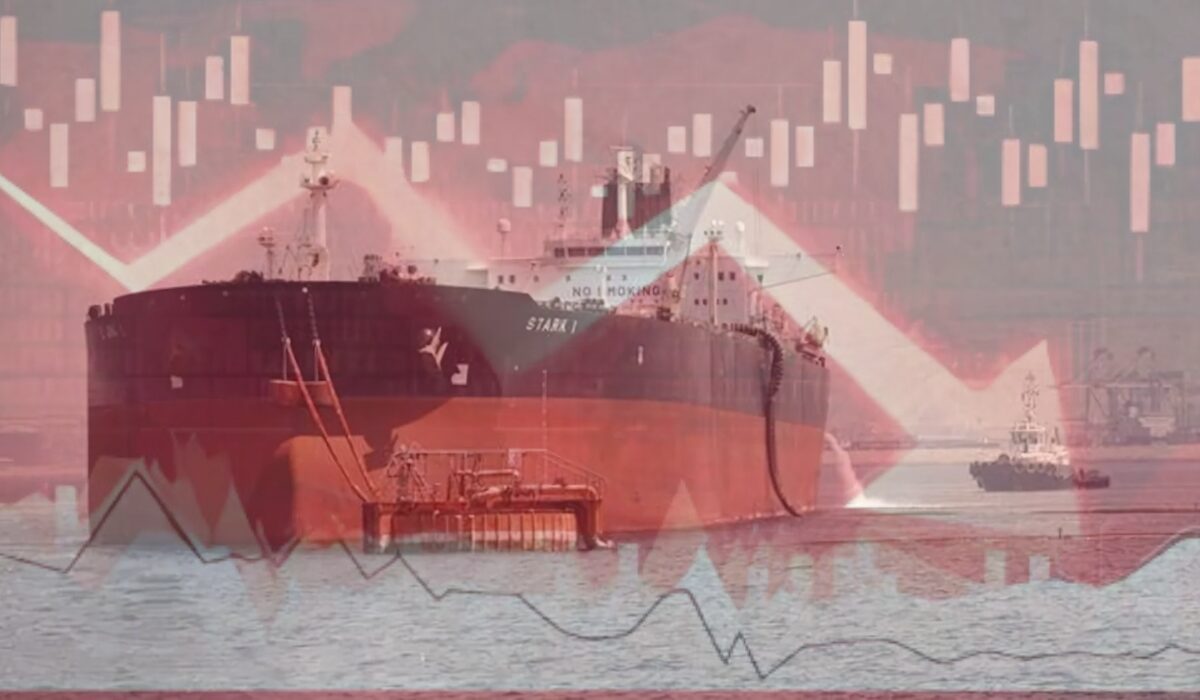Over the past week, the escalating conflict between Iran and Israel—marked by airstrikes, missile launches, and strategic threats—has transcended regional borders to impact the global economy. From oil market shocks to financial volatility, the world is witnessing a cascade of economic consequences. Here’s a deep dive into the factors at play and their far-reaching implications.
- Oil Markets: Price Surge and Supply Anxiety
Soaring Prices
- Following Israel’s strikes on Iranian nuclear and energy infrastructure (e.g., South Pars gas field and Natanz), Brent crude spiked ~7–14%, surpassing $74–$78 per barrel—the sharpest increase since early 2025.
- Goldman Sachs has assigned a $10 / barrel geopolitical risk premium, warning prices may hit $90–$100 if the Strait of Hormuz is threatened .
Strategic Chokepoint Risk
- About 18–19 million barrels per day—nearly 20% of global oil—flows through the Strait of Hormuz.
- Iran’s threats to close the strait amplify supply fears, with analysts cautioning that oil could soar to $120–150/barrel in a protracted conflict.
- Inflation, Central Banks & Consumer Prices
Inflationary Pressures
- Higher energy costs feed directly into consumer prices. A sustained rise in oil could push inflation rates well above current targets—for instance, U.S. inflation could accelerate to ~5%.
- Europe, still recovering from pandemic-induced inflation in the 3–4% range, may see renewed upward pressure on energy and food prices .
Central Bank Dilemma
- Policymakers face tough choices: tightening too aggressively amid supply‑side shocks could stall growth; too loose, and inflation runs wild .
- Market Volatility and Safe-Haven Flows
Equity Market Slumps
- Stocks took a hit: global indices dipped ~1–2%; U.S. S&P fell ~1%; Dow dropped ~1.8% .
- European equities showed early weakness due to renewed inflation worries .
Investor Flight to Safety
- Gold, U.S. Treasuries, and the Swiss franc have rallied amid geopolitical uncertainty .
- Energy and defense stocks outperformed. S&P’s energy sector returned ~+3.8%, Exxon up ~3.8%, Valero +5%.
- Energy Infrastructure Damage
- Israel’s strikes damaged both Iranian and Israeli energy facilities, including gas plants and oil depots.
- In Iran, oil exports have almost halted—down from ~1.7 million barrels/day to under 0.1 million—with South Pars gas output and Kharg Island shipments disrupted.
- The disruptions, while not comprehensive yet, highlight the fragility of energy supply chains globally.
- Trade, Shipping Costs & Supply Chains
Shipping Disruptions
- Tanker routes are being rerouted or bypassing the Gulf, raising insurance premiums and costs.
- A tanker collision in the Strait adds to logistical concerns, prompting precautionary diversion .
Global Manufacturing Impact
- Rising energy and shipping costs leak into commodity prices and manufacturing margins—especially for petrochemicals, fertilizers, and basic goods .
- Industries from agriculture to chemicals face cost pressure and potential slowdowns.
- Economic Growth & Strategic Scenarios
Experts outline three scenarios:
- Contained Conflict: Tactical strikes halt quickly → inflation spike is short-lived, oil normalizes, minimal economic drag.
- Protracted Tensions: Ongoing proxy warfare → elevated oil, sticky inflation, volatile markets, slowed growth.
- Regional War & Strait Closure: Broad conflict, shipping chokepoint seizure → oil surges to $150/barrel, risk of global recession.
- Long-Term Implications
Energy Realignment
- The crisis boosts calls for energy diversification—renewables, domestic supplies, and resilience-focused policies .
Geopolitical Shifts
- Potential for global alliances shift: U.S. involvement could draw in China, Russia, or Gulf states, complicating sanctions, trade, and investment.
- Investors reassessing regional risk could reduce FDI flows to MENA, pushing money toward safer jurisdictions .
National Budgets Under Stress
- Israel’s defense spending surged (~21% increase in budget; 8.8% of GDP), with high mobilization costs and economic drag.
- Iran’s economy, already hampered by rolling blackouts and energy shortfalls, faces amplified pressure from infrastructure attacks and export freezes .
- What Comes Next?
Diplomatic Efforts
- Renewed mediation is essential. Rapid containment can avert worst outcomes. Markets bet on diplomatic solutions moderating volatility.
Policy Readiness
- Central banks must balance inflation vs. growth as supply shocks ease.
- Strategic petroleum reserves and OPEC production decisions will shape near-term price dynamics.
Investor Strategy
- Brace for continued spikes in energy, inflation, and volatility. Monitor developments around the Strait of Hormuz and regional military escalations.
- Diversification—across assets, commodities, and currencies—remains crucial in navigating uncertainty.
Conclusion: While today’s markets reflect caution, the longer-term economic impact depends critically on what happens next. A contained flare-up may cause only temporary disruptions. But if maritime chokepoints are threatened or the conflict widens, we could see commodity shocks, inflation spikes, and a meaningful slowdown in global growth.
For deeper analysis on how global macroeconomic fundamentals are evolving under geopolitical stress, check out procapitas.com.

































